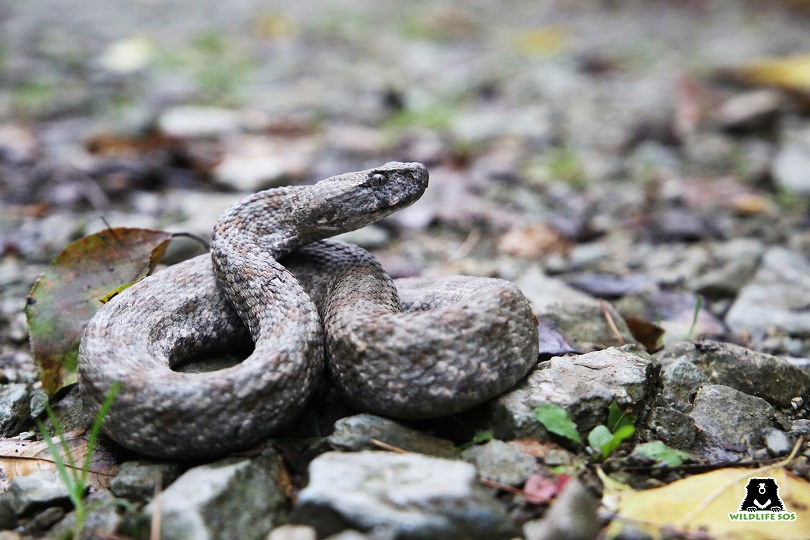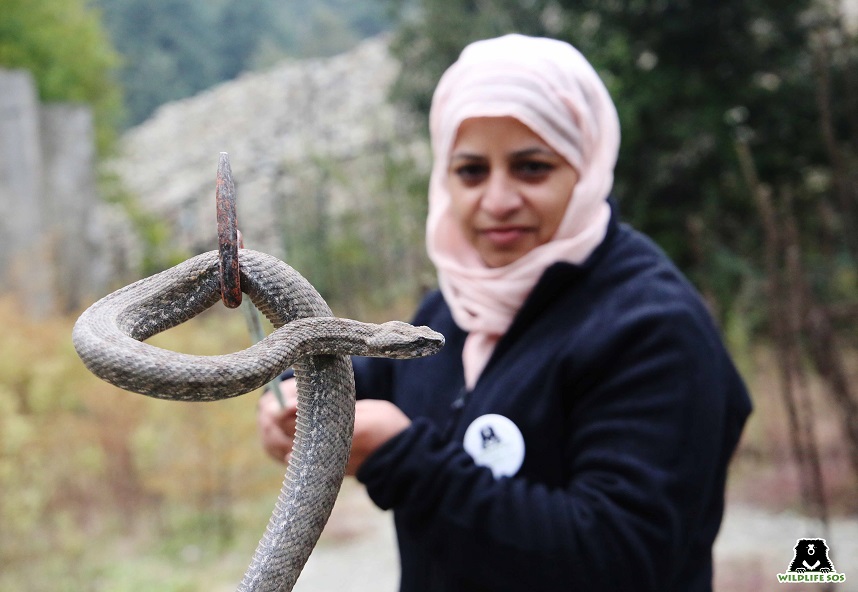
This year, the human-induced climate change resulted in a quick switch from winter to summer and forced snakes come out early to escalate the human-reptile conflict.
BEARING a stark resemblance with a South American reptile, a recent viral video showed backpackers being cut short by a crawling viper. Before one could even wonder about the location, the koshur dialect and the familiar Zabarwan heights rang alarm bells.
Despite being rare, such reptiles set tongues wagging, as they were spotted time and again, amid the soaring mercury in the valley this summer.
But this ‘snake in backyard’ moment of Kashmir didn’t create impact beyond a passing debate in the virtual world.
The fact, however, remains that as the valley is witnessing a rise in temperature from the last two months, the snake sightings in Zabarwan range of Srinagar have increased.
These crawling creatures have only made Aaliya Mir a go-to wildlife expert today.
Apart from clearing lawns and residences of the former heads of unified command in Kashmir, Aaliya was seen rescuing snake in full public glare at Jahangir Chowk lately.
There has been a considerable rise in the number of snake rescue-ops conducted by this expert snake-catcher in Kashmir this year. She blames climate change for these surging snake-sightings.
“Snake rescue calls have increased this year,” Aaliya, Education Officer and Programme Head- Jammu and Kashmir, Wildlife SOS, told Kashmir Observer.
“Due to climate change, the venomous snakes especially Levantine Viper commonly known as “Gunas” was recently found in residential areas of the Dalgate and Buchwara, Srinagar.”
Since these areas come under the Dachigam-Zabarwan range, she said, they’re the typical habitat of snakes. “But then these creatures would rarely come out,” she said, “as they do now.”

Aaliya is Kashmir’s sole woman wildlife rescuer who has helped the wildlife department rescue the reptiles and release them in their natural habitat for decades.
“I usually rescue rat-snakes and Himalayan trinkets which are non-venomous species, while Levantine Viper commonly known as “Gunas” is the most poisonous and are mostly found in residential areas.”
Levantine vipers are capable of lightning-fast strikes when provoked and will give out a warning hiss before striking, she said. “This snake is highly aggressive, so we had to resort to great caution while extricating over three Levantine vipers from Srinagar in a single day.”
According to Wildlife SOS—a non-profit body established in 1998 “with the primary objective of rescuing and rehabilitating wildlife in distress across India”—one Levantine viper was even rescued from the former Chief Minister Mehbooba Mufti’s residence.
Among the other crawling catches of this summer, was an Indian rat snake rescued at the periphery of Srinagar city. It had fallen into a deep pit.
But while these snakes are coming out of their holes like never before this year, the question, many ask, is how Kashmir is suddenly witnessing such a reptile rush?

Five years ago, Aaliya said, snake sightings were quite rare in Kashmir. But since the temperature is increasing, she said, snakes come out from the burrows to maintain their body temperature.
Snakes go deep into their burrows for brumation—a form of hibernation in snakes—to regulate the warmth during winters.
And since they cannot regulate their internal body temperature, snakes do not come to the surface during the colder months of March and April. “They remain underground to keep themselves warm, and only surface in summers for natural sunlight and heat.”
But this year, Aaliya said, the human-induced climate change resulted in a quick switch from winter to summer and forced snakes come out early to escalate the human-reptile conflict.
“Our helpline starts receiving snake rescue calls generally from the month of May,” she said. “But this year, due to the excessive heat and the lack of rainfall, there’s a high probability that the brumation of the snakes was shorter, forcing them to come out of their burrows earlier.”
Follow this link to join our WhatsApp group: Join Now
Be Part of Quality Journalism |
Quality journalism takes a lot of time, money and hard work to produce and despite all the hardships we still do it. Our reporters and editors are working overtime in Kashmir and beyond to cover what you care about, break big stories, and expose injustices that can change lives. Today more people are reading Kashmir Observer than ever, but only a handful are paying while advertising revenues are falling fast. |
| ACT NOW |
| MONTHLY | Rs 100 | |
| YEARLY | Rs 1000 | |
| LIFETIME | Rs 10000 | |













